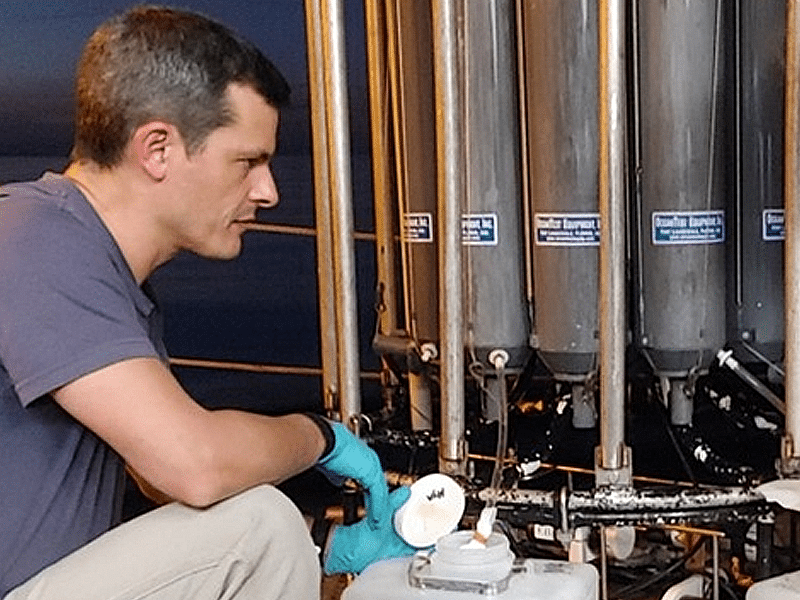1oo Stories

People
UMCES Researcher Awarded $1.15M for Ocean Virus Study

Dr. Joaquín Martínez, a microbial oceanographer at University of Maryland Center for Environmental Science (UMCES), has been awarded $1,153,105 from the National Science Foundation (NSF) to lead groundbreaking research exploring the role of viruses in marine food webs and nutrient cycling.
In collaboration with Dr. David Talmy of University of Tennessee Knoxville, the three-year study will investigate how viruses are removed from the ocean environment through a process known as virovory—the consumption of virus particles by microbial grazers—and how that process impacts the flow of carbon and nitrogen through marine ecosystems.
“Viruses are often seen simply as agents of disease, but they are also abundant and active players in the ocean’s nutrient and energy cycles,” said Martínez. “We want to understand how grazing on viruses contributes to the way nutrients like carbon and nitrogen move through marine food webs—especially how these processes may vary in different parts of the ocean and during different seasons.”
Viruses in the ocean don’t just cause infections—they play a surprisingly important role in keeping the ocean ecosystem running. For the most part, each virus type targets specific microscopic organisms like bacteria or algae. When a virus infects and breaks open one of these tiny cells, it releases nutrients back into the water fueling other microbes and shifting how energy and nutrients move through the ocean. Viral infection also increases the production of sticky compounds enhancing aggregation of particles that sink deeper, helping to trap carbon in the ocean—a natural recycling and sequestration system that affects everything from food webs to climate.
To better understand how viruses impact ocean life, scientists will use advanced tracking techniques and computer models to study how tiny marine creatures feed on viruses. They’ll collect natural samples from different parts of the ocean—from nutrient-rich coastal waters to nutrient-poor open ocean areas—and run lab experiments to see which viruses are eaten more often and by which microbes. The research will also explore whether larger viruses, like enveloped dsDNA viruses, offer more value as a food source compared to smaller ones.
“This work will provide a crucial piece of the puzzle in understanding the marine carbon cycle,” added Martínez. “It aligns with global efforts to model the ocean’s role in climate regulation and predict how ecosystems respond to environmental change.”
In addition to its scientific contributions, the project is committed to education and outreach. Students from UMCES programs and participants in STEM initiatives, including SigmaCamp for middle and high school students, will have opportunities to engage in the research. The project also places emphasis on mentoring early-career scientists and building skills in science communication.
This award underscores NSF’s mission to fund research with high intellectual merit and meaningful societal impacts, helping to train the next generation of scientists while addressing fundamental questions about the ocean’s environment.






